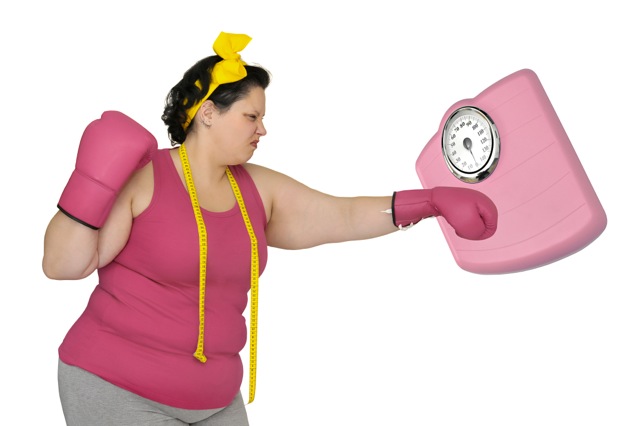
Love handles. Muffin top. Spare tire. Menopot. Jelly belly. As I explain in my best selling book, The Estrogen Fix, women use a lot of disparaging terms for the belly fat associated with menopause. As they stare into the mirror at their once-svelte bodies and try to zip up a favorite pair of pants, they wonder what is going on. “I’ve got a closet full of clothes that don’t fit,” one of my patients told me, “and I don’t get it! I go to the gym four times a week and eat a pretty healthy diet. I cut way back on carbs like pasta and bread and treat myself to a glass of wine just twice a week, but nothing I do makes any difference. If I lose weight, it’s from my face, neck, and arms, but not from my waist and belly.”
Belly fat is not just a cosmetic issue, limited to the amount of fat we can pinch between our fingers; it also has a more sinister medical significance. Another accumulation of fat surrounds our internal organs beneath the fascia or canvas covering of our belly: visceral fat. It really should be called “vicious” fat because it contributes to a host of diseases that increase the risk of heart disease, high blood pressure, stroke, joint disease, and type 2 diabetes, though for 16 percent of women, their metabolism stays healthy in spite of their increased weight, probably because of genetic factors. Studies show that being overweight or obese isn’t only a medical issue; it also affects quality of life and self-esteem.
Body Mass Index (BMI)
Body mass index (BMI) is a person’s weight in kilograms divided by the square of height in meters. A high BMI can be an indicator of high body fat. BMI is a screening tool, but it does not diagnose fatness or health of an individual.
To calculate your BMI, use the BMI calculator at: http://1.usa.gov/1dSzT3p.
- A BMI less than 18.5 falls within the underweight range.
- A BMI 18.5 to 24.9 falls within the normal or healthy weight range.
- A BMI 25.0 to 29.9 falls within the overweight range.
- A BMI 30.0 or higher falls within the obese range.
I have a personal appreciation for this issue. When I was helping my then 91-year-old mother move from the house I grew up in to a smaller condominium, I found a box of old newspapers. In that box were the headlines “Pearl Harbor Attacked” and “President Kennedy Assassinated.” But it was a different front-page headline that caught my attention; it read, “Mighty Might: The Fattest Kid in the County.” The photo was taken many years ago in December in front of a large Christmas window display at Sears filled with Santa and his reindeer and piles of fake snow. In front of him stood a fat two-and-a-half-year-old boy in pleated pants looking like Santa’s mini. The fat little boy in the picture was me. I learned growing up that being large does not expand how good you feel or how good you feel about yourself. Feeling bad about myself and being incessantly teased and unable to keep up with the other kids motivated me to learn to watch what I eat, get enough exercise, and control my weight as an adult. While being fat certainly isn’t healthy, I can tell you from personal experience, it’s also no fun.
According to Business Insider, the “average” American woman now wears a size 14 with “plus-sizes, often classified as sizes 14 to 34, needed for 67 percent of the population.” If this sounds like you, you are definitely not alone. For many women, this transition to clothes that are several sizes larger begins around menopause. Why is that? Does estrogen (too much or too little) influence midlife weight gain in women? We are going to explore the answers to these questions in future posts…stay tuned.
To find out how much your menopause symptoms are affecting you, take the Menopause Quiz. It’s free and takes only about 1-2 minutes.
